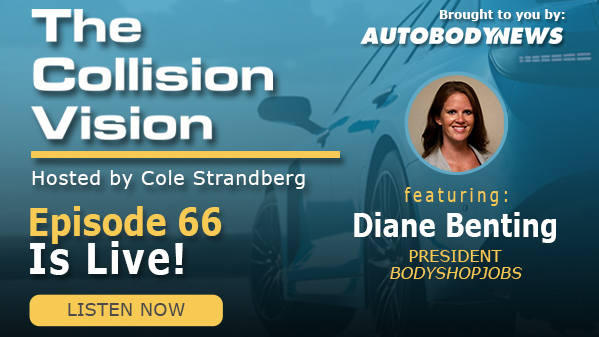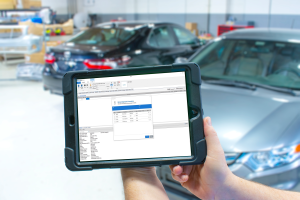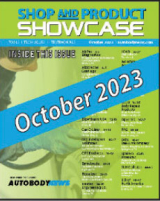Length of Rental (LOR) in Q1 2023 was 18.7 days, an increase of one-half day from Q1 2022, Enterprise reported April 28. The results, while still at high levels, did offer some glimmers of normalization as opposed to continued increases.
Of note were the results for non-drivable claims, which continue to be exacerbated by supply chain disruptions, parts delays, collision repair backlogs and technician shortages.
Alaska had the highest LOR at 22.7 days, followed by Colorado and Louisiana---both at 21.6. Oklahoma and Oregon were next highest at 21.4 days. Four additional states---West Virginia, Montana, Georgia and Rhode Island---had LOR of 21 days or greater.
Hawaii had the lowest at 14.0 days, with North Dakota (14.6), Washington, D.C. (14.7) Iowa (15.3) and Nebraska (15.8) next-lowest.
The highest year-over-year increases were seen with Montana (21.1) recording a 3.4-day increase from Q1 2022, while Alaska and South Dakota had the next-highest increases, of 2.6 and 2.1 respectively.
On a positive note, 26 states had increases less than a full day, while Indiana and Delaware were flat.
Ten other states, plus D.C., saw decreases in Q1 2023 from Q1 2022, with Louisiana and DC dropping by the most---0.7 days each.
What’s significant about the number of smaller increases and decreases is in reviewing Q1 2022 statistics. A year ago, there were no states that had overall LOR decreases; all states were higher with Hawaii showing the lowest increase of 1.5 days over Q1 2021.
When comparing this quarter to the last quarter, Q4 2022, only six states plus D.C. had increases less than a full day, again with no states seeing decreases.
John Yoswick, editor of the weekly CRASH Network newsletter, said the national average backlog of work at U.S. shops set another record-high in January, reaching 5.8 weeks, up from 5.3 weeks in the last quarter of 2022.
For the first time since they began tracking backlogs in 2017, fully 60% of shops in January were scheduling work four or more weeks into the future. Of the more than 700 shops that responded to the survey, almost 9 in 10 (87%) were scheduling two weeks or more into the future, and only eight shops (1.1%) said they currently had no backlog and could schedule work immediately.
The percentage of shops with an opening for one or more body techs dipped slightly in the fourth quarter of 2022 for the first time since the early days of the pandemic. But those changes weren’t dramatic. Nearly two-thirds of shops (65%) still said they would like to hire another body technician.
Greg Horn, PartsTrader’s chief innovation officer, who oversees their data analytics department, looked at overall delivery days for all parts on a state level and found an interesting pattern emerge for Q1 2023 that mirrored Enterprise’s rental trends.
“In looking at our delivery days charts, I was once again struck at the similarity in our delivery day trends and Enterprise’s Length of Rental," Horn said. "For Q1 2022, we did not track a single state that decreased in overall delivery days from Q 1 2021. But for Q1 2023, we saw a mix of increases and decreases in same quarter/year over year days.”
At a state level, PartsTrader tracked seven of the 10 states showing similar decreases to Enterprise’s results. The remaining three states where Enterprise showed a decrease in LOR from Q1 2022 showed the delivery days were identical between Q1 2023 and Q1 2022.
Horn concluded, “Replacement parts make up the majority of costs of an estimate, and delays in parts delivery will impact length of rental. However, body and paint labor are the second-highest cost component and also drive cycle times. Parts fulfillment is improving, but shop technician shortages still impact overall cycle time.”
Yoswick also added, “Almost 40% of shops in December said they were experiencing fewer parts challenges in recent months than they had in late 2021. A third of shops said they had seen no change in terms of parts challenges, with more than 1 in 4 (27%) saying parts-related issues had actually increased.”
Ryan Mandell, director of claims performance for Mitchell International, said, “The environment for parts availability appears to be consistently improving, especially in regard to aftermarket parts. The utilization of alternative parts increased from 34.98% in Q1 2022 to 37.02% in Q1 2023. Additionally, the rate of repair for collision repairs also improved by over a full percentage point from 17% in Q1 2022 to 18.14% in Q1 2023."
Drivable
Drivable LOR in Q1 2023 was 16.1 days, a 0.6-day increase over Q1 2022. Georgia had the highest LOR at 18.8 days, followed by Oklahoma (18.7), Rhode Island (18.6) and Oregon (18.5). Alaska, Louisiana, Colorado, Texas and Tennessee all had drivable LOR above 18 days.
North Dakota recorded the lowest drivable LOR with 10.9 days, followed by Hawaii (11.8), Washington, D.C. (12.0), Iowa (12.7) and Vermont (12.7).
Alaska saw the highest increase with drivable LOR up a full 3.0 days (18.4), while Montana was up 2.4 days (16.4). While nearly every state saw a drivable LOR increase, only eight of them were greater than a full day. Washington, D.C., had the lowest decrease by a full day (12.0), while Louisiana saw a half-day decrease (18.4).
As with overall LOR, no states showed any decrease when comparing this quarter last year (Q1 2022) to the same quarter a year prior (Q1 2021).
Non-Drivable
LOR for rentals associated with non-drivable claims was 27.5, an increase of 0.8 days over Q1 2022. Montana had the highest LOR with 34.5 days, followed by West Virginia (33.9), Colorado (33.3), Washington (33.1), and Oregon (33.0). Ten additional states had LOR of 30 days or greater, while 13 more had LOR at or above 28 days.
In Q1 2022, only five states had a non-drivable LOR above 30 days. New York had the lowest non-drivable LOR at 22.9 days, with four states---Iowa, Michigan, Massachusetts and California---plus D.C. posting LOR under 25 days.
Montana had the highest increase, jumping up 5.6 days from Q1 2022. Alaska and Colorado had increases of 3.8 days, while five other states increased three days or more.
Seven states, led by New York (-1.6), had decreases from Q1 2022, and California’s non-drivable LOR results were static. While Q1 2022 had no states with any decrease from the previous year---in fact, the lowest increase was 4.1 days---the overall increase was impacted through 42 states plus D.C. all seeing higher results in Q1 2023.
Total Loss
Total Loss LOR in Q1 23 was 18.4 days, a small decrease of 0.1 days from Q1 2022. While negligible, it does contrast against the Total Loss increase of 4.1 days seen between Q1 2022 and Q1 2021.
Hawaii (+5.5) and Wyoming (+5.0) saw the highest increases, with Kansas showing the next highest increase over Q1 2022 at 3.0 days. Four states had flat results, and 22 states plus D.C. all saw decreases.
Idaho (17.7) saw results down by 3.8 days, and Rhode Island, Massachusetts and D.C. saw decreases of 2.5 days.
Conclusion
At the most recent Collision Industry Conference (CIC), a panel of industry stakeholders discussed process opportunities and customer impacts, supporting the goal of the entire industry aligning all collision-related businesses for procedural solutions and to ensure our mutual customers receive safe and proper repairs, an excellent experience and peace of mind.
Enterprise is committed to partnering with insurers, repairers and suppliers on each one of these issues. Through foundational support provided by the Enterprise Holdings Foundation, Enterprise is spearheading the Collision Engineering Program, designed to attract and develop entry-level talent to fill essential roles within the collision repair industry.
Enterprise is thrilled to expand its longtime partnership with Ford Motor Company, through its philanthropic arm, the Ford Fund, to expand the program and help address this ongoing industry challenge. For more information, visit www.beacollisionengineer.com.
Source: Enterprise









